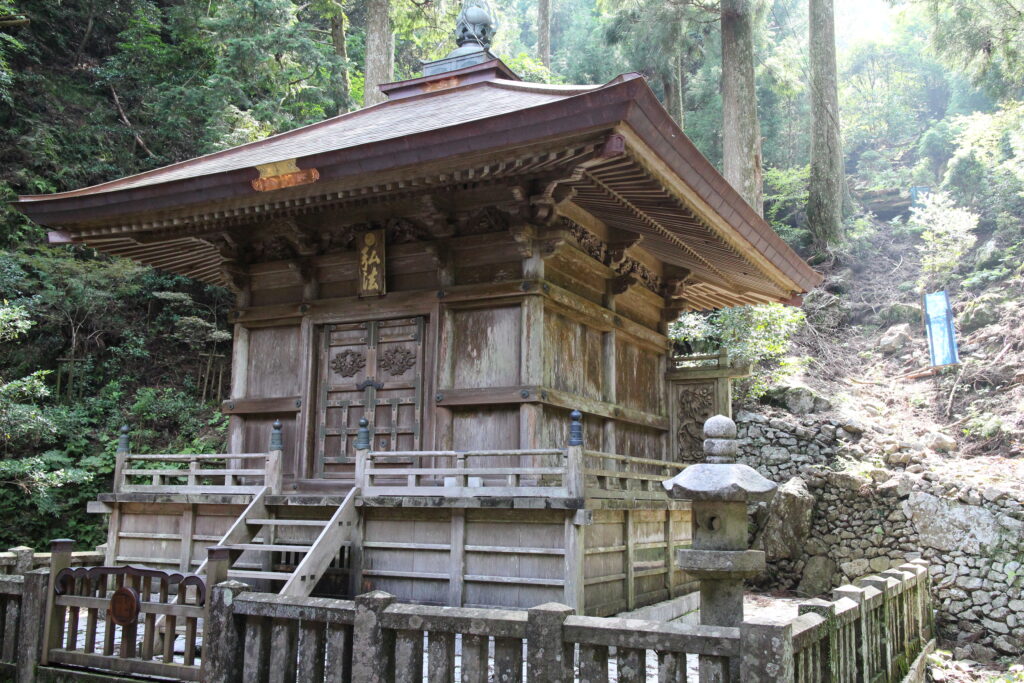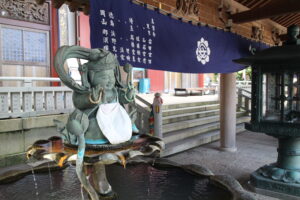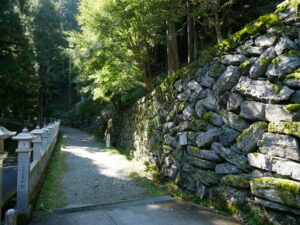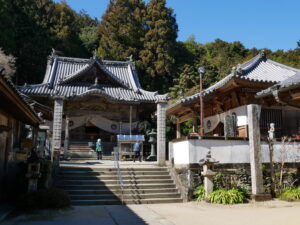Tucked away on a towering mountaintop, Tairyu-ji is one of the Shikoku Pilgrimage’s most impressive temples, with roots stretching back right to Kobo Daishi Kukai himself.
Origins and History
While many of the legends passed down at temples are of uncertain origin, Tairyu-ji is unique in that Kukai himself mentions that he practiced here as a young man in his writings. Sitting on the peak of Mt. Shashin and reciting mantras, he records that his “voice echoed through the valleys.” The temple is one of the few training facilities where the Gumonji-bo, the demanding 100-day ritual Kukai practiced in his youth, is still performed by Shingon priests. As the vast grounds of the temple and its remote location suggest, Tairyu-ji was once a renowned regional training center for monastics. Though now the precincts are managed by only a few resident clerics, they still maintain much of their grandeur, making Tairyu-ji one of the most memorable stops on the pilgrimage.

What to See at Tairyu-ji
The walking path to Tairyu-ji follows a well-maintained trail beside the crystalline Wakasugitani Stream, at one point passing a cliff face pocked with eerie caverns, the traces of a 1500-year-old cinnabar mine. The final section up to Tairyu-ji was historically known as a Henro Korogashi, or “Pilgrim Killer” section—it’s now steep, but well-maintained.
Past the majestic temple gate is a sign pointing to “Northern Mt. Shashin,” a rocky crag accessible by ladder with a commanding view of the forested mountains that surround it, used by ascetics for meditation in times past. Further on is the complex housing the temple office, famous for the dragon painted on the ceiling of one of its corridors, fitting considering that the temple’s name means “Temple of the Great Dragon.”
Next you’ll climb up a stone staircase past the belltower, and finally emerge at the main part of Tairyu-ji’s enormous complex, home to the Main Hall, a pagoda, the Daishi Hall, and a number of other shrines and monuments, all sheltered by towering cedars. The Daishi Hall, in particular, features carvings of incredible elegance. Behind the Daishi hall is the Miei-do, the Hall of the Sacred Image, where Kobo Daishi’s spirit is said to reside. This part of the complex is modeled closely on Kobo Daishi’s grave at Mt. Koya, the headquarters of Shingon Buddhism, and is part of the reason Tairyu-ji has long been known as “the Mt. Koya of the West.”
Down the stairs from the main hall is the gondola station, a convenient way to descend the mountain for those looking to avoid the long walk to Temple 22. A 15-minute climb from the lift station takes past statues of the Henro’s 88 Buddhas. At the top of this trail is Mt. Shashin, where you’ll find an enormous bronze statue of Kukai serenely looking out to the Pacific Ocean.

Discover the Mt. Koya of the West, With Guidance
Tairyu-ji is one of the Shikoku Pilgrimage’s true hidden treasures: awe-inspiring, remote, and rich with the legacy of Kukai himself. From forest paths to sacred halls, every step here feels meaningful. With our expert guide-interpreters, you’ll gain a deeper understanding of the history, practice, and quiet power that make this temple unforgettable. Whether you walk or ride, Shikoku Tours ensures you arrive with clarity, reverence, and a sense of wonder.









